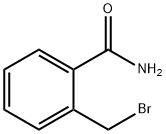4-Aminopyridine , 98% , 504-24-5
Synonym(s):
4-Aminopyridine;4AP;4-Pyridinamine;4-Pyridylamine;Fampridine
CAS NO.:504-24-5
Empirical Formula: C5H6N2
Molecular Weight: 94.11
MDL number: MFCD00006439
EINECS: 207-987-9
PRODUCT Properties
| Melting point: | 155-158 °C (lit.) |
| Boiling point: | 273 °C (lit.) |
| Density | 1.26 |
| vapor pressure | 0.046Pa at 25℃ |
| refractive index | 1.5560 (estimate) |
| Flash point: | 156°C |
| storage temp. | 2-8°C |
| solubility | H2O: soluble50mg/mL, clear, colorless |
| form | Crystalline Powder, Solid or Crystals |
| pka | 9.114(at 25℃) |
| color | White to faint grey to light yellow |
| Water Solubility | Soluble in water(112 g/L at 20°C). Soluble in ethyl ether, benzene. Slightly soluble in ligroin. Very soluble in ethanol. Soluble in methanol, acetone, tetrahydrofuran, isopropanol, acetonitrile, N,N-dimethylformamide, dimethylsulfoxide, and ethanol. |
| Merck | 14,3933 |
| BRN | 105782 |
| Stability: | Hygroscopic |
| InChIKey | NUKYPUAOHBNCPY-UHFFFAOYSA-N |
| LogP | -0.76 at pH7.4 |
| CAS DataBase Reference | 504-24-5(CAS DataBase Reference) |
| NIST Chemistry Reference | 4-Pyridinamine(504-24-5) |
| EPA Substance Registry System | 4-Aminopyridine (504-24-5) |
Description and Uses
4-Aminopyridine (4-AP, fampridine, dalfampridine) is the first drug approved by the FDA to improve walking in patients with multiple sclerosis (MS). Dalfampridine is a voltage-gated potassium channel blocker that readily penetrates the CNS and increases the conduction and duration of action potential across nerve fibers resulting in enhanced functionality as observed in the walking speed of MS patients.
Besides, it has repellent–toxicant properties for birds.
Avitrol (4-aminopyridine), has repellent–toxicant properties for birds and is classed as a severe poison and irritant. This secondary bird repellent can be used as a broadcast bait, causing uncoordinated flight and distress calls and escape responses in nearby birds.
Safety
| Symbol(GHS) |    GHS05,GHS06,GHS09 |
| Signal word | Danger |
| Hazard statements | H300-H311+H331-H314-H411 |
| Precautionary statements | P260-P273-P280-P303+P361+P353-P304+P340+P310-P305+P351+P338 |
| Hazard Codes | T+,N,T,Xi |
| Risk Statements | 28-36/37/38-51/53-23/24/25 |
| Safety Statements | 26-36/37/39-45-60-61-37/39-28A-1 |
| RIDADR | UN 2671 6.1/PG 2 |
| WGK Germany | 3 |
| RTECS | US1750000 |
| F | 8-21 |
| Autoignition Temperature | 640 °C |
| Hazard Note | Toxic/Irritant |
| TSCA | TSCA listed |
| HazardClass | 6.1 |
| PackingGroup | II |
| HS Code | 29333999 |
| Hazardous Substances Data | 504-24-5(Hazardous Substances Data) |
| Toxicity | LD50 orally in Rabbit: 21 mg/kg |





